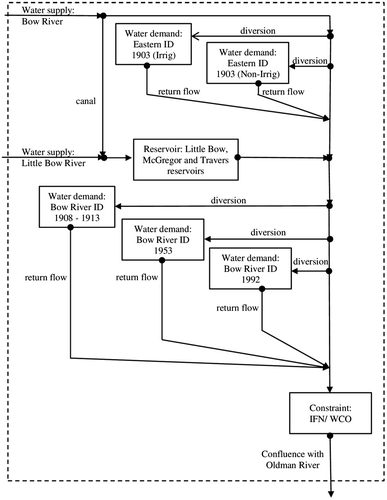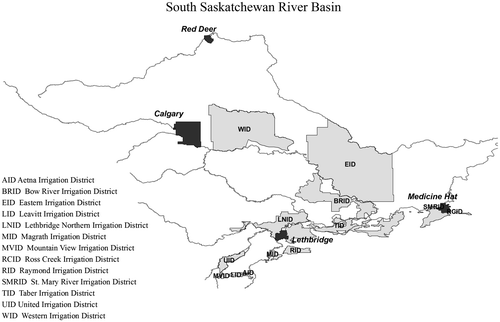Figures & data
Figure 2. The South Saskatchewan River Basin (SSRB) in Aquarius. The SSRB is represented in Aquarius as a network of approximately 70 demand and supply nodes. This figure provides a snapshot of how the network is modeled in the SSRB with diversion points and return flows along the reach. ID: irrigation district; IFN: instream flow needs; WCO: water conservation objective.


